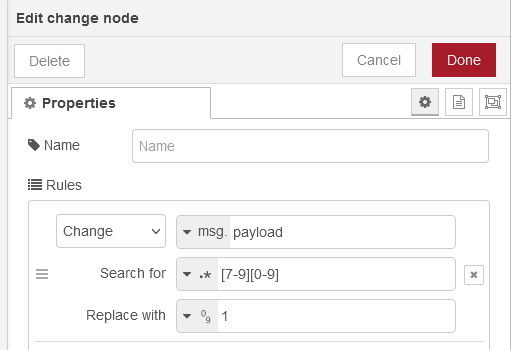Hi all
I'm a newbie to Node Red and just started with.
I would like to have a flow with Battery SoC, aTimer and Relay 2 on Cerbo.
Logically i would like to achieve this flow:
Timer On at Time + Battery SoC above value = Relay 2 On
Timer On at Time + Battery SoC below value = Relay 2 Off
Timer Off at Time + Battery SoC above value = Relay 2 Off
Basically i have started with the Flow below which turns on/off Relay 2 when Battery SoC is above value configured on the switch Node and Timer is On/Off.

The question is now how to integrate the switch Node output for value below Battery SoC.
I had the idea of replacing the switch Node by a change node with regular expression which matches SoC valus between 70-99.
configured like this the change node will still output the SoC value instead of 1; either regex does not match or i do misunderstand the usage of a change node for my purpose ...
thanks for any advice how to properly configure a flow to achieve my requirement.
best regards,



